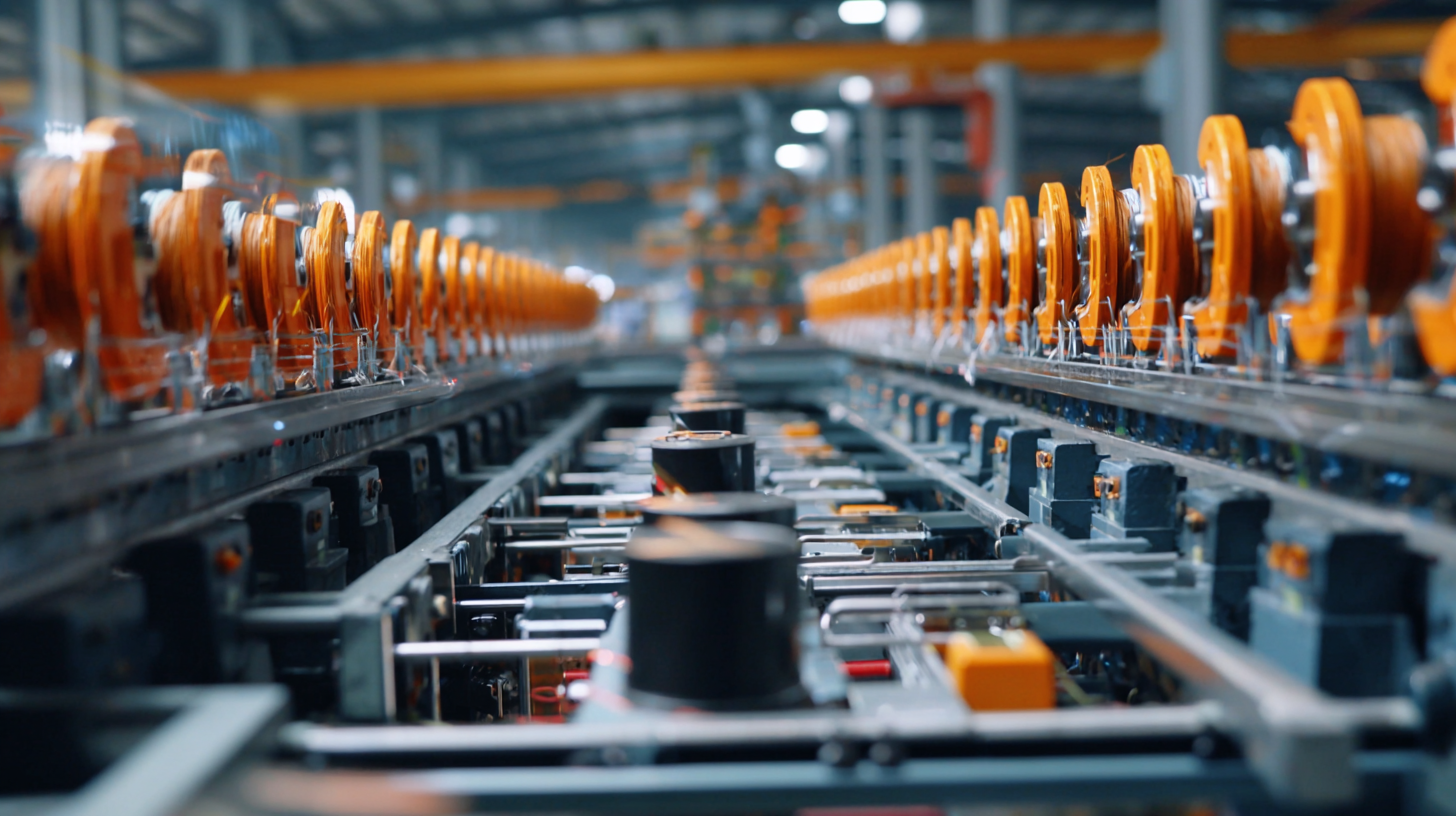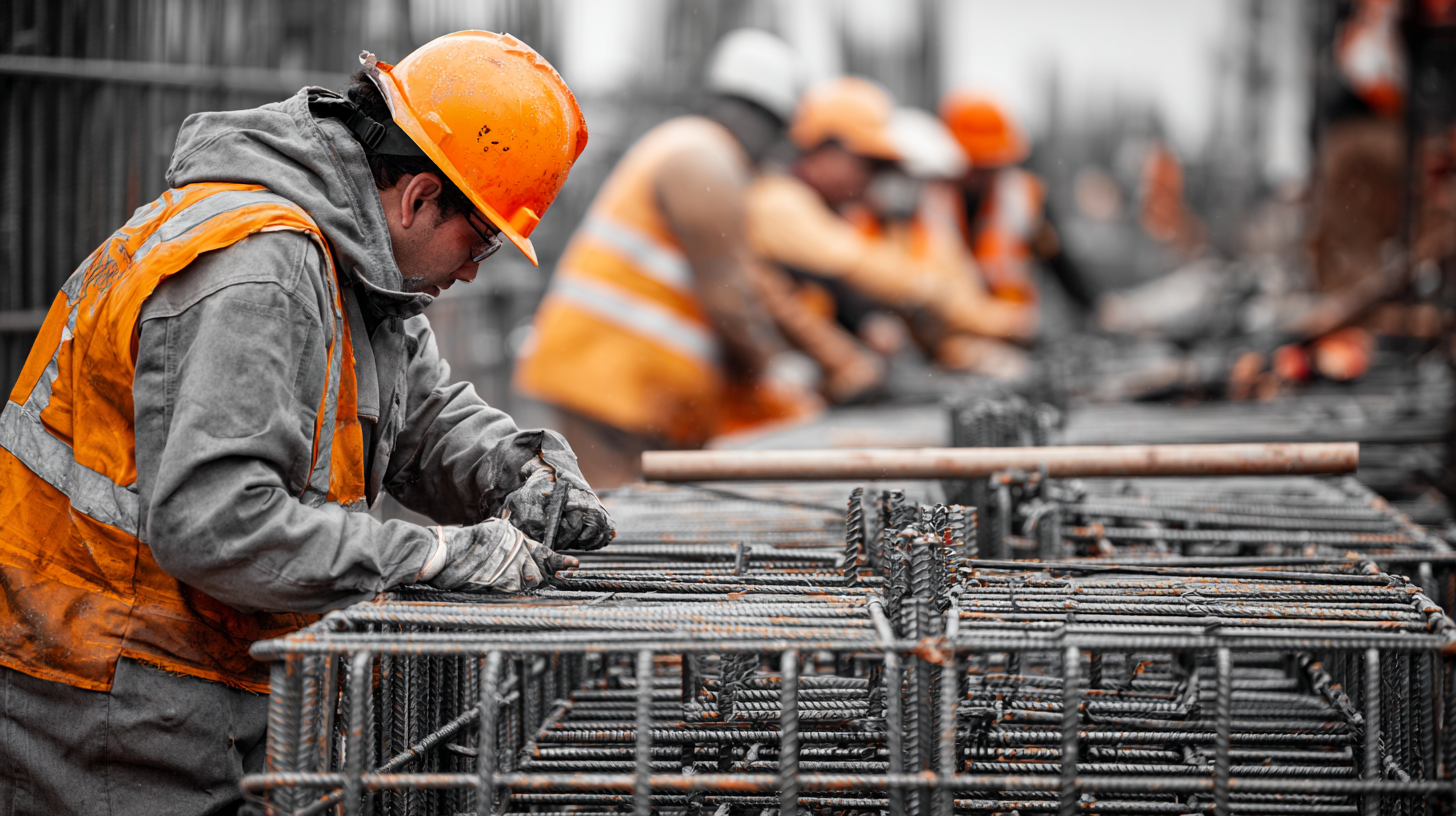
 E-mail:
voyage@voyagehndr.com
E-mail:
voyage@voyagehndr.com

BLOG
The Ultimate Guide to Boosting Construction Efficiency with a Stand Up Rebar Tying Machine
In the ever-evolving landscape of the construction industry, efficiency is paramount for project success. One of the innovative tools that has emerged to enhance productivity is the Stand Up Rebar Tying Machine. This machine revolutionizes the rebar tying process, allowing workers to maintain an upright posture while significantly speeding up the operation compared to traditional methods. By integrating ergonomic design and advanced technology, the Stand Up Rebar Tying Machine not only reduces physical strain on workers but also increases the quality and consistency of ties. As the construction sector faces increasing demands for faster and more reliable results, understanding how to effectively utilize this machinery can be the key to unlocking improved efficiency, ensuring projects are completed on time and within budget. This guide will delve into the various types of Stand Up Rebar Tying Machines available, their benefits, and tips for maximizing their potential on site.

Introduction to Stand Up Rebar Tying Machines: Enhancing Construction Processes
Stand up rebar tying machines have revolutionized the construction industry by enhancing efficiency and reducing labor costs. These machines allow workers to tie rebar while standing, which minimizes physical strain and increases productivity. According to a report from the Construction Industry Institute, projects utilizing advanced rebar tying technology have seen productivity improvements of up to 30%. This is particularly crucial in large-scale construction projects where time and labor can significantly impact the bottom line.
In addition to boosting productivity, stand up rebar tying machines also improve the quality and consistency of rebar connections. A study published by the American Concrete Institute indicates that using mechanized tying processes reduces the likelihood of human error, leading to robust and reliable structures. Furthermore, with construction technology evolving, these machines are increasingly becoming more sophisticated, featuring adjustable tying speeds and varying tension controls, allowing contractors to customize their approach based on the project's specific needs. As the industry adapts to modern technologies, investing in stand up rebar tying machines is not just an operational enhancement; it’s a strategic decision for future-ready construction practices.
Key Benefits of Using a Stand Up Rebar Tying Machine for Efficiency
The use of stand up rebar tying machines significantly enhances construction efficiency by streamlining the reinforcement tying process. According to a report by the NIST, construction inefficiencies can lead to costs up to 30% higher than necessary, often due to labor-intensive practices such as manual tying. By integrating a stand up rebar tying machine, which allows operators to remain upright while tying rebar, construction teams can save time and reduce labor fatigue.

Industry studies indicate that using a stand up machine can increase productivity by as much as 50%. This is particularly crucial on large construction sites where speed and manpower management are essential. The ergonomic design of these machines not only aids in reducing the risk of injury but also allows workers to maintain a steady output without the strain associated with bending or kneeling. Consequently, projects can meet tight deadlines more effectively, while also maintaining high standards of safety and quality in the construction process.
Step-by-Step Guide: Setting Up Your Stand Up Rebar Tying Machine
 Setting up a stand-up rebar tying machine can significantly enhance construction efficiency,
streamlining the process and reducing labor fatigue. Begin by selecting a suitable area free from clutter and providing adequate space
for the machine's operation. Make sure to check the manufacturer’s specifications to understand the power requirements and safety features.
This setup step is crucial as a stable foundation can prevent accidental disruptions during operation.
Setting up a stand-up rebar tying machine can significantly enhance construction efficiency,
streamlining the process and reducing labor fatigue. Begin by selecting a suitable area free from clutter and providing adequate space
for the machine's operation. Make sure to check the manufacturer’s specifications to understand the power requirements and safety features.
This setup step is crucial as a stable foundation can prevent accidental disruptions during operation.
Next, ensure that all components of the machine are properly assembled.
Attach the tying head securely and adjust the tension settings according to the rebar size you will be using. Before starting the machine,
perform a test run with a piece of scrap rebar to familiarize yourself with its operation and to fine-tune any necessary adjustments.
Proper training on using the machine is vital; therefore, ensure all operators understand the safety precautions and operational guidelines
for effective and safe tying. With the correct setup in place, you will notice a substantial increase in productivity on your construction site.
Best Practices for Maximizing Performance with a Stand Up Rebar Tying Machine
When utilizing a stand-up rebar tying machine, adopting best practices can significantly enhance construction efficiency. According to a report by the Associated General Contractors of America, improper equipment usage can lead to a 30% loss in productivity on job sites. Therefore, ensuring that operators are well-trained in the specific functions of the machine can drastically mitigate these inefficiencies. Additionally, regular maintenance and calibration of the tying machine are essential, as a well-maintained device can operate up to 15% faster than one that is neglected, as indicated by industry research from Construction Equipment Magazine.
Moreover, strategic planning and organization of rebar layout can further optimize performance. A study published by the American Concrete Institute reveals that tasks such as pre-tying and grouping rebar can reduce the time spent tying by as much as 40%. This efficiency gain not only shortens project timelines but also allows crews to allocate resources more effectively. By implementing these best practices and focusing on training, maintenance, and planning, construction teams can leverage the full potential of stand-up rebar tying machines to boost overall productivity and project outcomes.
The Ultimate Guide to Boosting Construction Efficiency with a Stand Up Rebar Tying Machine - Best Practices for Maximizing Performance with a Stand Up Rebar Tying Machine
| Practice | Description | Efficiency Gain (%) | Recommended Tools |
|---|---|---|---|
| Proper Training | Ensure all operators are trained proficiently in using the machine. | 30 | Training Manuals, Practice Rounds |
| Regular Maintenance | Follow a maintenance schedule to prevent machine downtimes. | 25 | Lubricants, Spare Parts |
| Optimal Tool Selection | Select the right tool for specific rebar sizes and ties. | 20 | Tool Kits, Size Markers |
| Workflow Optimization | Streamline the workflow to reduce unnecessary movements. | 35 | Site Plans, Checklists |
| Ergonomic Practices | Implement ergonomic practices to reduce strain on workers. | 15 | Ergonomic Mats, Tool Balancers |
Troubleshooting Common Issues with Stand Up Rebar Tying Machines
When using stand up rebar tying machines, issues can arise that may hinder productivity on the construction site. Common challenges include jamming, inconsistent tying, and battery failure. Addressing these issues promptly can help maintain efficiency in rebar placement and enhance overall workflow.
**Tips:** To prevent jamming, ensure that the rebar is properly aligned and that the tying machine is regularly cleaned of dust and debris. For inconsistent tying, check the tension settings and make adjustments as necessary. Additionally, always monitor the battery levels before starting the day to avoid interruptions; keeping a spare battery on hand can save valuable time on-site.
Proper maintenance and troubleshooting can significantly enhance the longevity of your equipment. Regularly inspect the machine's components, such as the tying mechanism and battery connections, to ensure everything functions smoothly. Should issues persist, consult the manufacturer's guidelines or reach out to experienced technicians for support, ensuring that your productivity remains uninterrupted.
The Efficiency of Stand Up Rebar Tying Machines
This chart displays the average time taken to tie rebar using traditional methods versus a stand-up rebar tying machine across various job sites. The data is based on observational studies from several construction projects.



